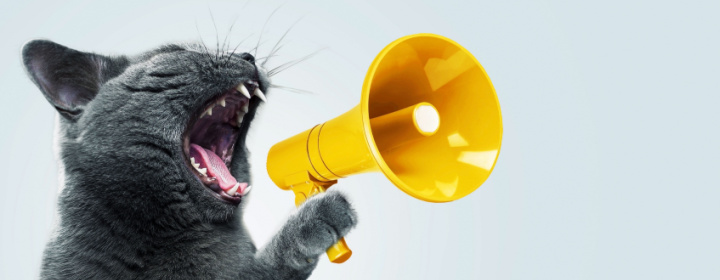
What Your Cat Is Trying to Tell You in East St. Louis, IL
What your cat is trying to tell you in East St. Louis, IL. Cats are wonderful and curious beings that have been living in human homes for almost 10,000 years. Many people think of them as aloof, but this utterly false. In actuality, cats are incredibly communicative animals, and they are almost always trying to let their East St. Louis, IL owners know something. In this article, we'll explore some of the common ways your cat communicates with you, so you can have a better grasp of what your feline family member wants and needs.
At Cats Only in East St. Louis, IL, our philosophy is in our name: we offer our services to cats and only cats. We know that cats have unique needs, and we strive to treat and handle them in ways they find comfortable. If you're looking for cat grooming, cat boarding, or cat daycare services in East St. Louis, IL, call us today at 618-772-8315. Otherwise, keep reading to unlock the secret communication style of cats.
Purring
Everyone knows the purring sound that cats make, and it's often associated with contentment and relaxation. But, cats also purr when they are feeling anxious or stressed, so it's best to look for other clues to be sure about the reasons behind their purring. If your East St. Louis, IL cat is relaxed and has a soft, loose body, then they are likely purring out of contentment. On the other hand, if other indications point to your cat being stressed out, such as a fluffed-up tail, they might be purring to make themselves feel better.
Meowing
Meowing is a cat's way of vocalizing with humans. While cats sometimes meow at other cats, they primarily use meowing to communicate with humans. The sound of a cat's meow can convey a range of emotions and messages, from a simple greeting to a demand for food. Listen carefully to your East St. Louis, IL cat's meows and try to ascertain what they want you to know.
Body Language
Cats are masters of non-verbal communication, and they use a variety of postures and movements to communicate with us. Here are some common examples:
- Tail position — A cat's tail can tell you a lot about their mood. A high, straight tail indicates confidence and contentment, while a tucked tail indicates apprehension. A swishing tail may be a sign of enthusiasm, irritation, or that your cat is intently focused on something.
- Ears — A cat's ears can also convey a lot of information. When their ears face forward it can indicate interest or inquisitiveness, while flattened ears suggest fear or aggression.
- Pupil dilation — A cat's pupils will dilate as the result of a variety of stimuli, including arousal and worry. Pay attention to your cat's pupils to get a sense of their emotional state.
- Posture — A cat's body posture can also give you indications about their mood. A relaxed, open posture indicates contentment and relaxation, while a hunched posture indicates they're frightened or aggressive.
Grooming
Cats are scrupulous animals and spend 30-50% of their day grooming themselves. Their grooming habits can tell you a lot. For example, if your cat "grooms" your hand or face, they may be trying to bond with you. Conversely, if you notice lesions or lack of fur from over-grooming, it may be a sign of stress or anxiety. Try to follow your East St. Louis, IL cat's grooming habits and look for signs of over-grooming.
Vocalizations
Beyond meowing, cats make a variety of other vocalizations that mean different things. Cat vocalizations include:
- Hissing — A cat will hiss when they think they might be in danger. If your cat is hissing, leave them by themselves for a while and try to find out what's scaring them.
- Chirping — Cats will often make a chirping or trilling sound when they see birds or other prey animals. This is a primal hunting instinct and a sign that your cat is excited or stimulated.
- Growling — A cat will growl when they feel threatened or aggressive. If your cat is growling, leave them by themselves for a minute and avoid approaching them until they have calmed down.
Scratching
Scratching is a natural behavior for cats, and it serves a variety of purposes, including relieving stress. However, if your cat is scratching excessively or in inappropriate spots, they may be stressed out. Providing your cat with a scratching post and redirecting their behavior to other surfaces can help relieve these problems in East St. Louis, IL.
Litter Box Behavior
How your cat acts in the littler box can also provide insights into their health and emotional state. If your cat suddenly stops using the litter box or shows changes in their bathroom habits, it may be a sign that something's wrong. It's important to deal with these issues promptly and consult with your East St. Louis, IL veterinarian if the issues doesn't resolve itself. Sometimes, getting a bigger or more comfortable litter box resolves the issue.

Cat Care in East St. Louis, IL | Cats Only
Cats communicate in a variety of ways, and cat owners need to to pay attention to their body language, vocalizations, and behavior to know how they're feeling and what they need from you. By making the effort to understand your East St. Louis, IL cat's communication style and responding appropriately, you can deepen your bond with your feline friend and ensure their happiness and well-being. As a cat grooming and boarding business, we understand the importance of communication with cats, and all of our staff are trained to be able to understand and gently handle cats. We strive to provide the best care possible to our feline guests. If you need cat grooming, or if your cat needs a safe and fun place to stay while you're out of town, please don't hesitate to reach out to Cats Only in East St. Louis, IL at 618-772-8315.

